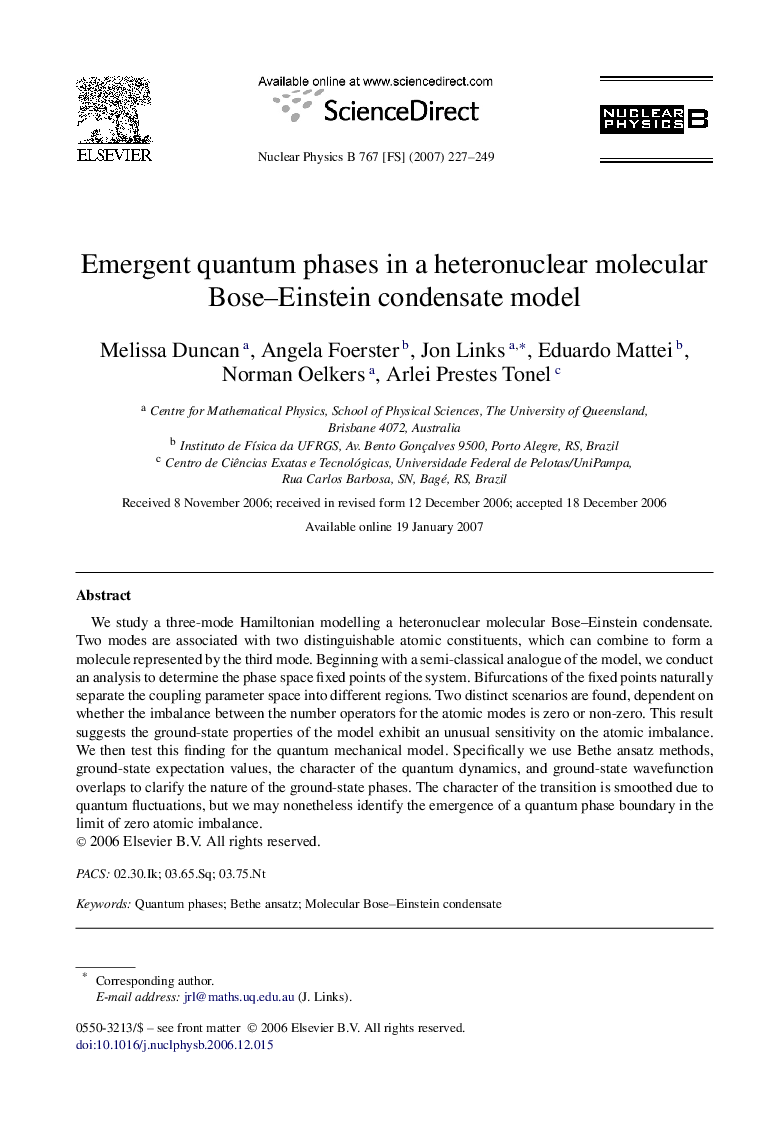| Article ID | Journal | Published Year | Pages | File Type |
|---|---|---|---|---|
| 1844156 | Nuclear Physics B | 2007 | 23 Pages |
Abstract
We study a three-mode Hamiltonian modelling a heteronuclear molecular Bose-Einstein condensate. Two modes are associated with two distinguishable atomic constituents, which can combine to form a molecule represented by the third mode. Beginning with a semi-classical analogue of the model, we conduct an analysis to determine the phase space fixed points of the system. Bifurcations of the fixed points naturally separate the coupling parameter space into different regions. Two distinct scenarios are found, dependent on whether the imbalance between the number operators for the atomic modes is zero or non-zero. This result suggests the ground-state properties of the model exhibit an unusual sensitivity on the atomic imbalance. We then test this finding for the quantum mechanical model. Specifically we use Bethe ansatz methods, ground-state expectation values, the character of the quantum dynamics, and ground-state wavefunction overlaps to clarify the nature of the ground-state phases. The character of the transition is smoothed due to quantum fluctuations, but we may nonetheless identify the emergence of a quantum phase boundary in the limit of zero atomic imbalance.
Related Topics
Physical Sciences and Engineering
Mathematics
Mathematical Physics
Authors
Melissa Duncan, Angela Foerster, Jon Links, Eduardo Mattei, Norman Oelkers, Arlei Prestes Tonel,
